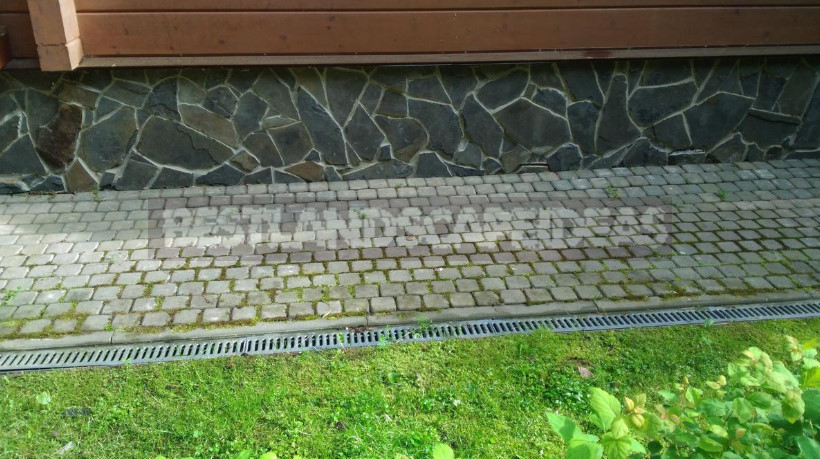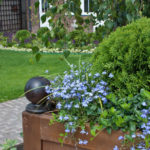When planning a country house, even an inexperienced developer knows what he will need for construction and is aware of the necessary components of a country building (Foundation, walls, roof, floors, Windows, doors). However, there is another component in the construction of the cottage, which is not formally included in the volume of the house and therefore it is often ignored.
And if they do, they leave its arrangement for a vague “later”, mistakenly believing that there is no urgency in its construction, because “above us is not a drop.” Perhaps no more inappropriate saying, when talking about the blind area. The fact that it is just “dripping”! And if mistakes were made during construction, often drops lead to irreversible results.
Unless you have a blind spot…
In an editorial post with annoying regularity, letters in which gardeners talk about the move Foundation, cracks in walls, sagging corners. As real practice shows, often this problem appears as a result of the impact of soil moisture on the “zero cycle” and the movement of heaving soils. But this trouble could definitely be avoided if the Foundation was under protection. That’s what the blind area is for. That is, it is a mandatory technological component for most types of foundations, and not imposed by greedy builders additional item of unforeseen expenses in and so growing before the eyes of the estimates, as many summer residents think.
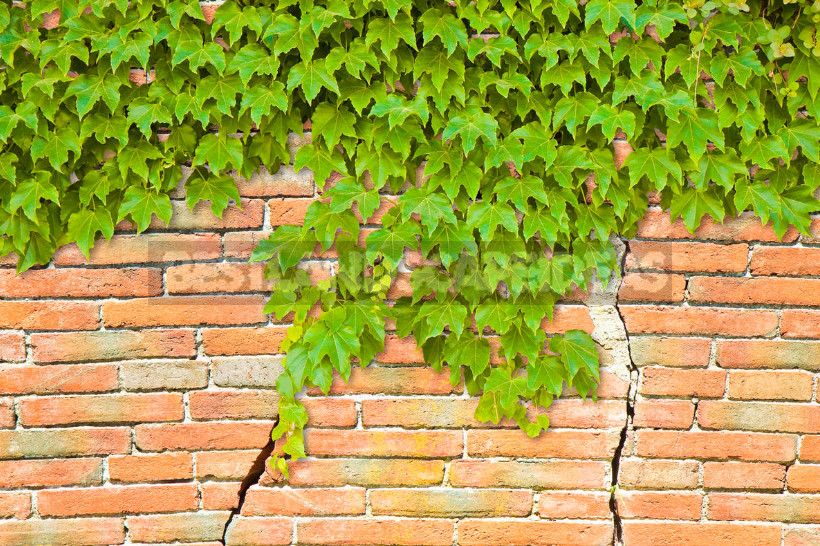
The more insulting it becomes for inexperienced suburban developers who are required to perform it very, very often do not pay attention. And not only due, and in General any. As a result, the Foundation is deprived of protection, it becomes directly available for moisture, as a result… see above, where it was about drops.
We build a blind area according to the rules and regulations
I hope I have convinced you of the necessity of arranging a capital blind area. Then let’s move on to the nuances of construction, which must know everyone who will be the construction of housing.
There are two types of blind area – hard and soft. When covering the first used concrete, asphalt, stone, paving slabs, and for the second – gravel, lawn, light tile.
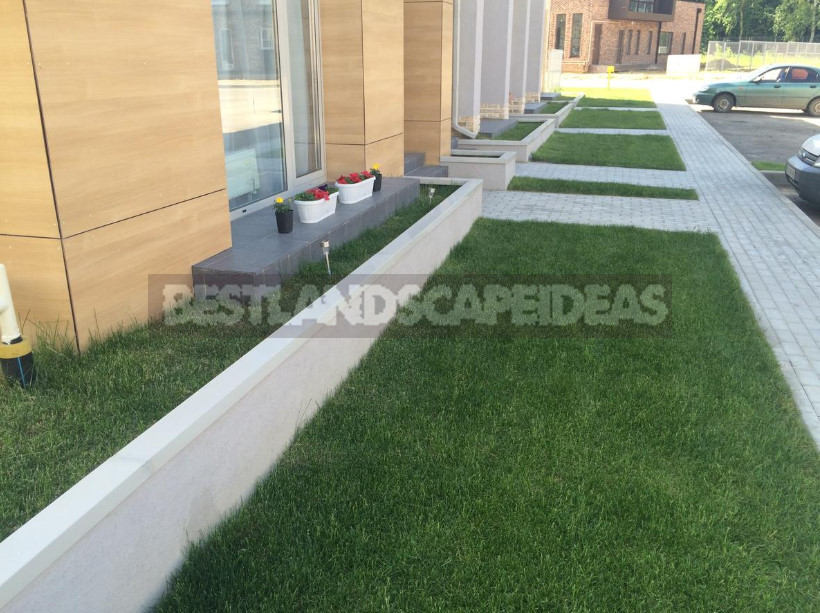
First of all, I think, it is necessary to exclude the typical technological errors that allow inexperienced builders in the construction of both types of blind area.
Error #1. Size and location
Around each building should be arranged in the waterproof area. With the length is clear, it is equal to the perimeter of the structure, but what should be the width? Can the blind area be made narrow? No way! That would be a fatal mistake! Raindrops falling from the roof trim (even with a well-organized drainage system, they will still be) should not fall on the open ground. That is, the width of the blind area should be about 20 cm wider than the size of the roof overhang.
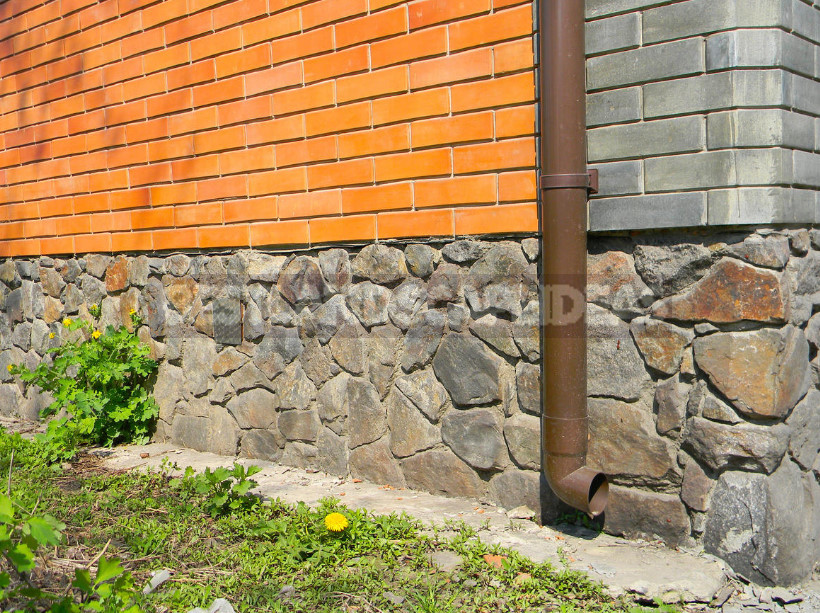
It will be appropriate to emphasize that almost all the parameters in the construction are strictly regulated. To clarify the details you are interested in, you should look, for example, in the “Rules and regulations for the design of complex improvement.” The normative document States in the most specific way: “the Width of the blind area for buildings and structures is recommended to be 0.8-1.2 m, and in difficult geological conditions – 1.5-3 m.”
In addition, I note that the porch with a ladder often blocks direct access to the outer wall of the Foundation. Of course, here the blind area should expand to clearly exclude the ingress of precipitation in the “forbidden zone” at the Foundation.
Mistake #2. Stagnant water
Fallen from the roof of the water remains on the surface of the blind area, forming puddles next to it. This suggests only that the authors of the blind area did not take care of the slope of its surface. According to the above-mentioned standards, the transverse slope of the blind area should be taken at least 10%. For example, if the width of the protective tape at your cottage is planned to be 1 m in size, the height difference between the longitudinal sides of the formwork should be about 10 cm, and no less!
The importance of transverse slope
Failed the height difference may be the result of a failed monolithic paving, if in the step of hardening of the concrete mix builders are not followed making it cross slope, and the concrete stack in a horizontal position.
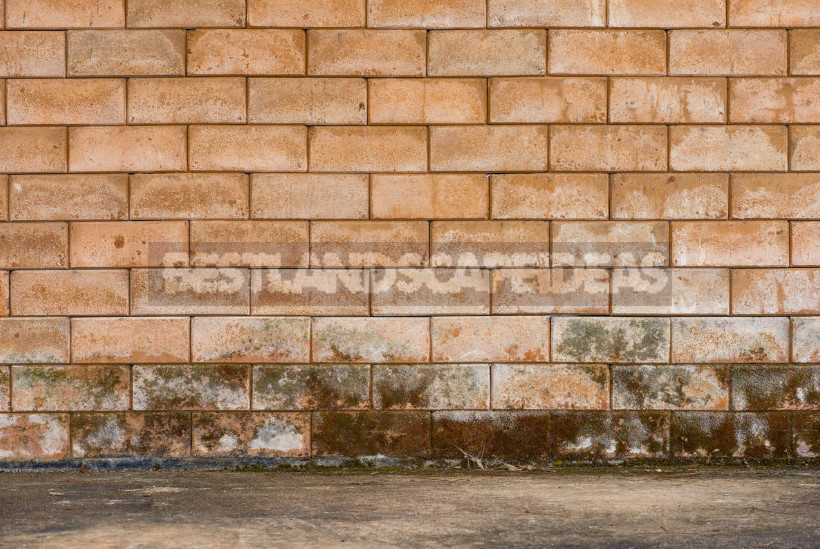
Drainage trays for drainage along the outer perimeter
This is not the end of the story with water: for its removal along the outer perimeter of the blind area, it is desirable to provide drain drainage trays. It can be modern plastic boxes, closed on top of metal bars, and just sawn along the pipe, laid on a solid Foundation.
And take care of the beauty
And the very design of the blind area around the perimeter is reasonable to frame the curb paving stone. It will give the building architectural completeness.
Mistake #3. Violation of the rules of concrete works
The sad consequence of errors of this kind will be the appearance of cracks on the concrete surface of the blind area. Than they threaten the design of the Foundation, it is easy to guess even far from the construction of a summer resident.
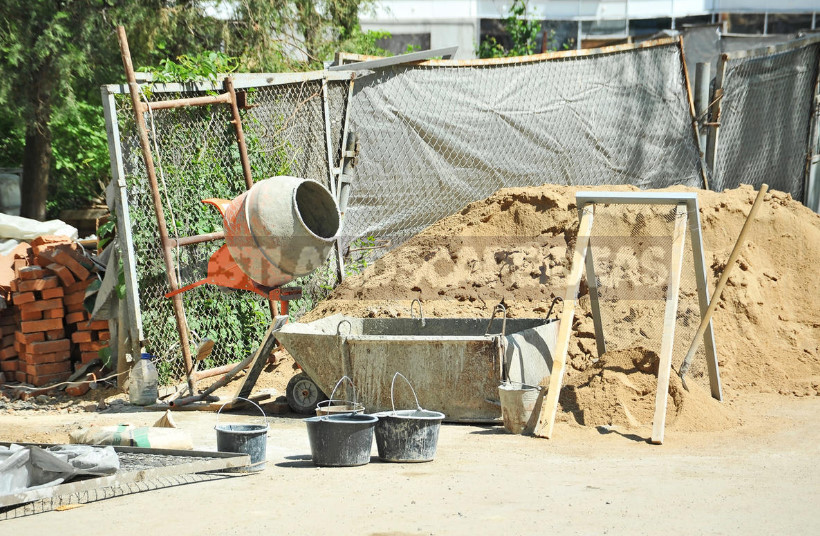
The composition of the concrete mixture is certainly known to every summer resident: cement, large aggregate (crushed stone fraction up to 20 mm), fine aggregate (sand), water. Then where did so many mistakes on the suburban horizon? The answer is clear: first, the errors lie in the wrong mixing algorithm. Second, in violation of the weight ratio of the components: this often happens if they measure by eye. From such frivolity experts strongly recommend to refuse. Precise dosing of the components is possible even in country conditions. What? In my opinion, nothing is better than ordinary buckets yet invented, the accuracy of weighing will be sufficient.
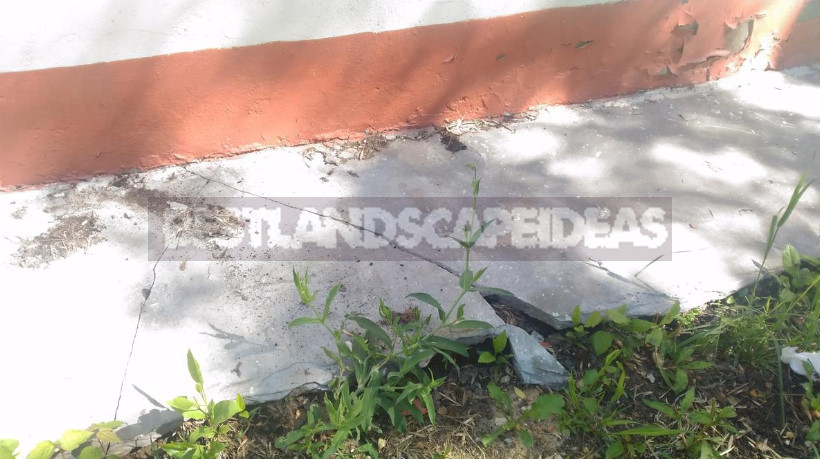
The proportions of the concrete mix
Traditionally, the proportions of the mixture are calculated based on 1 m³ of the finished batch. As an example, I propose to calculate the proportions for concrete M 250 (the most popular brand of mixture for low-rise construction). To obtain 1 m³ of m 250 solution you will need:
- cement grade M 400 – 332 kg;
- crushed stone – 1080 kg;
- the sand is 750 kg;
- water – about 215 liters.
The sequence of mixing the components
The sequence of mixing the components is also important. There can not be Amateur and do not need to invent anything – everything has been invented before us and has long been tested in practice. Experts believe that all dry components should be mixed first, and water is added later.
Mixing time
How long does it take to rotate the pear household mixer? For mixing of dry components is sufficient 2 minutes, and after gradual addition of water for 2 minutes.
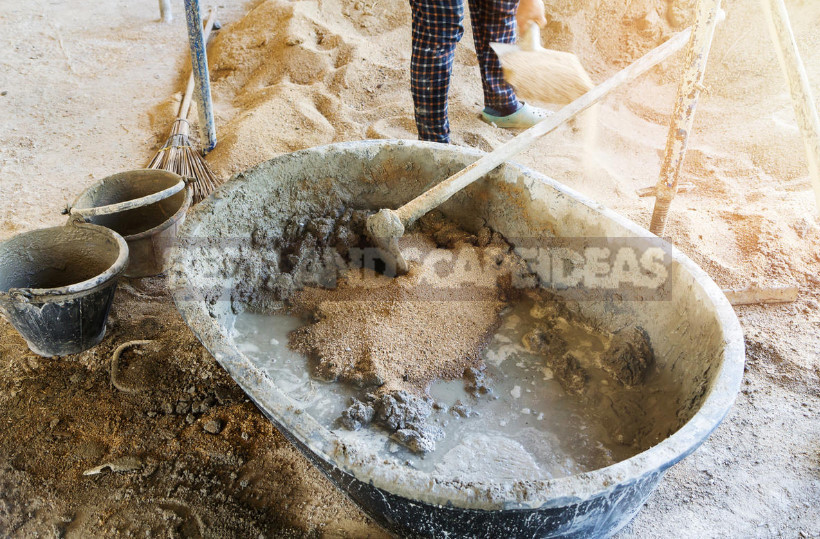
Eliminate the appearance of cracks
When pouring concrete into the formwork provide the strip across the strip of pavement of thin wooden bars that will play the role of the temperature expansion joints. They (the bars) is the main trump in the “struggle” with the cracking of concrete.
Seal and slope
The final stage of concreting – compaction of concrete mix and giving the slope in the transverse direction. You will have to rent a vibrating plate, the work of which will ensure the high quality of the finishing works.
Mistake #4. Not insulated blind area
Such an error will lead to negative consequences. If the blind area is not insulated, on heaving soils (clay, silty sandy loam, loam) in winter inevitably occurs the effect of frosty heaving, which is the most destructive effect on the Foundation structure.
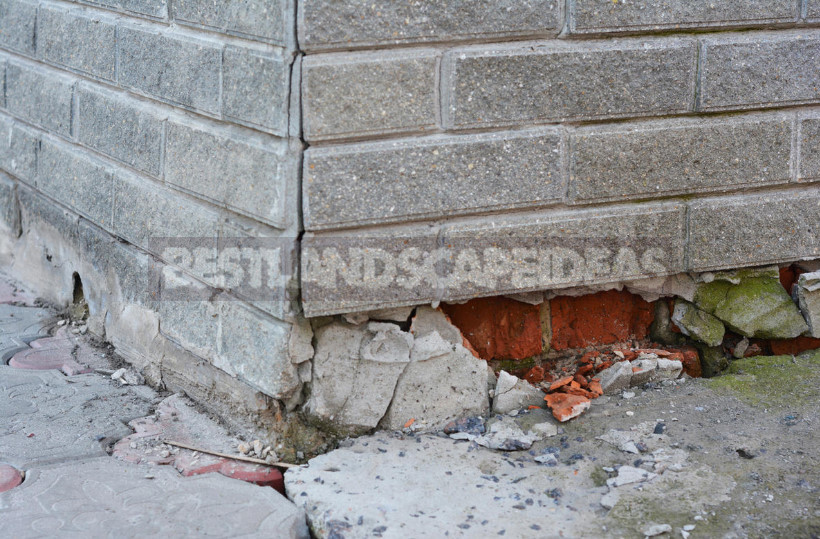
Advantages of insulated blind area
- in normal soils insulated crawl space protects the Foundation from cracking (if penetration into the concrete and sediment of melt water, which by freezing can destroy it);
- reduces the impact of external low temperatures and reduces the cost of heating the house.
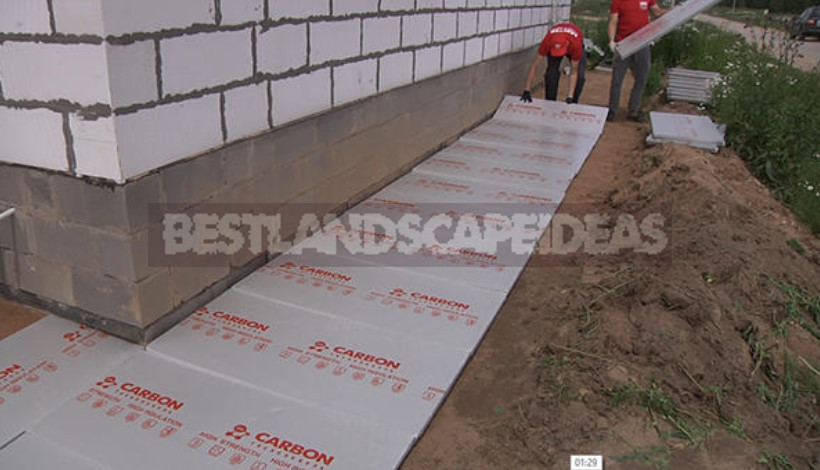
Therefore, experts recommend not to save on the insulation of the blind area – will be more expensive. As practice shows, in the modern market of building materials you can find the perfect combination of high quality and reasonable prices.
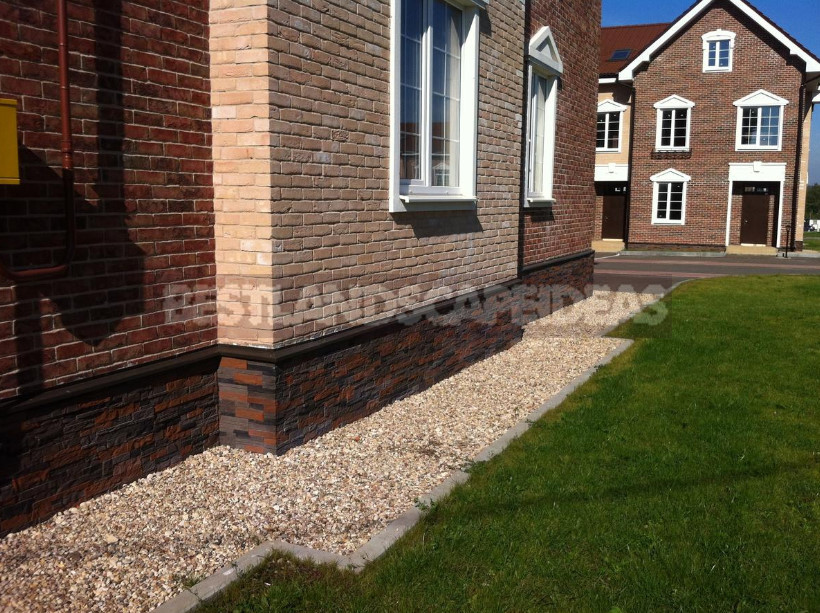
Mistake #5. Soft blind area passes moisture to the Foundation
In the construction of pavement soft top finishing coating can be Packed gravel, green turf, or tiles. Of course, such coatings need reliable waterproofing insurance. The optimal solution is the use of a profiled membrane with its institution on the wall of the house. It will create a sealed layer, block the penetration of precipitation to the Foundation.
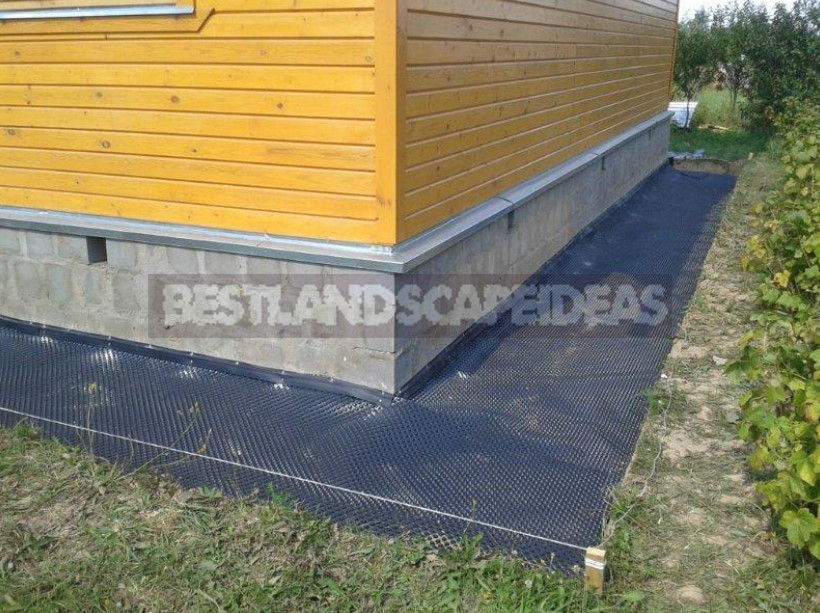
High technology on the guard of buildings
Membrane fabric consists of two layers:
- the bottom is made of high-density polyethylene, has projections on the surface in the form of spikes that form a drainage gap for water drainage from the house;
- the top layer is geotextile filtering water and preventing clogging of the drainage gap.
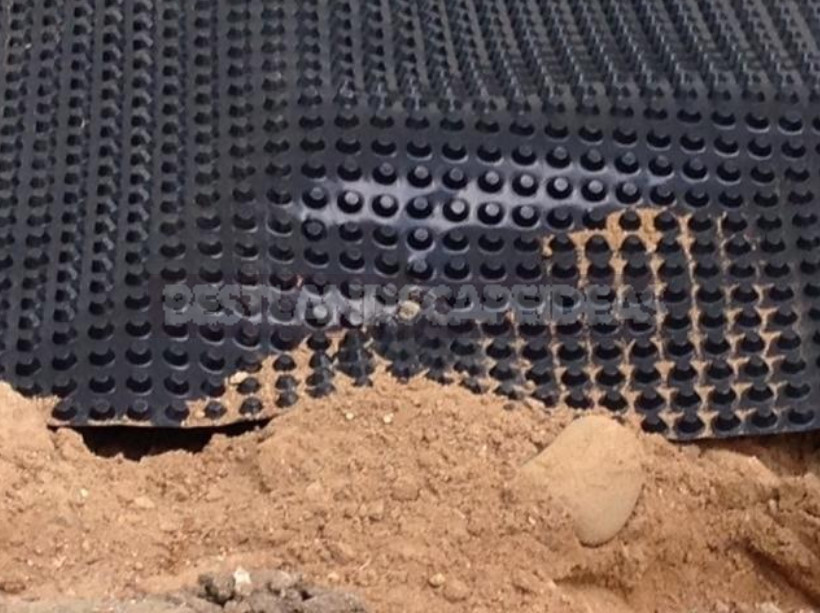
Quality blind area – it’s just
The main thing is to eliminate the above errors and use quality materials. Once again I will allow myself to recommend summer residents (in their interests!) do not save on the construction of the blind area, because the strength of the structure depends on how reliably it protects the Foundation! In my opinion, it is technically correct to use both products mentioned in the article for the construction of high-quality blind area.
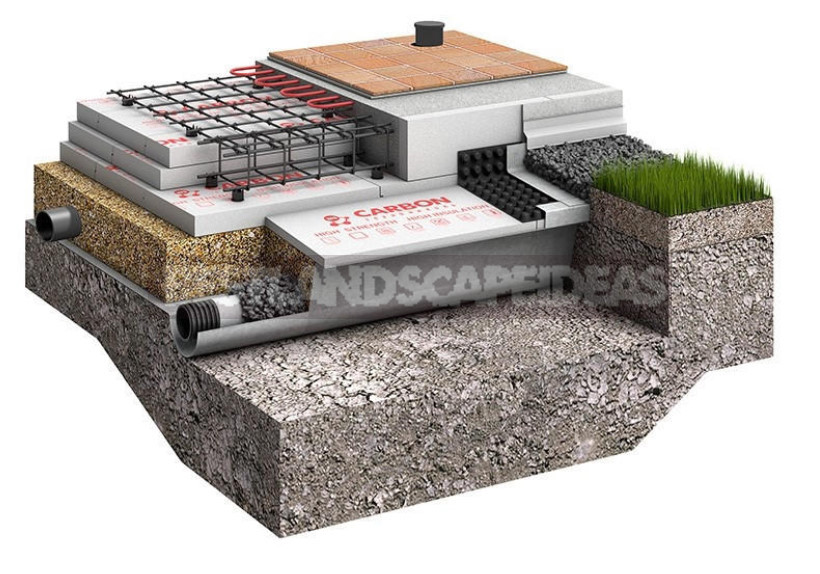
As you can see, the use of modern high-tech materials is justified: with their help you will create a reliable and beautiful (which is also important, you will agree!) the blind area, which faithfully will protect the Foundation of your home for many years.
